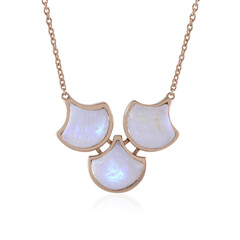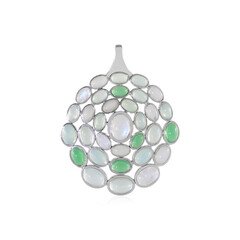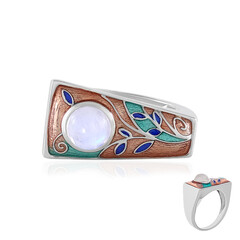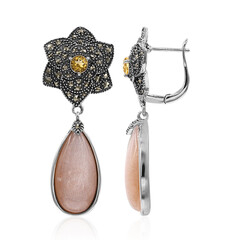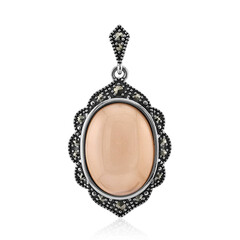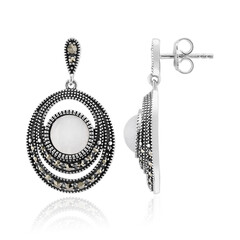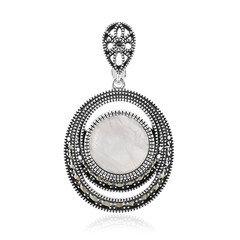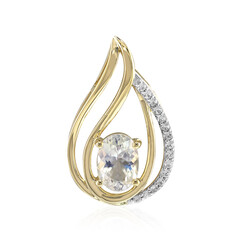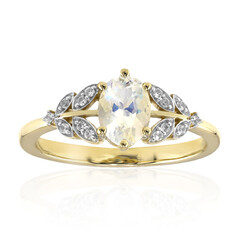Moonstone
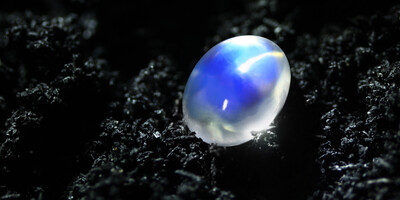
1. Introduction
The moonstone fascinates with its soft shimmer and mystical aura. This gemstone, known for its pearly white to bluish hues, symbolises inner clarity and emotional balance. Discover the enchanting beauty of the moonstone and learn interesting facts about the gemstone with the magical aura.
2. Name, Origin and History
Name
Also known as "selenite" and "adularia", the moonstone owes its name to its resemblance to this celestial body. Selenite is derived from the Greek word "selene", which means "moon" and is also the name of the moon goddess in Greek mythology.
Origin
Moonstone is mined commercially in a few remote deposits in Brazil, Myanmar, the European Alps, India, Madagascar, Malawi, Sri Lanka, Tanzania and the USA. The majority of Sri Lanka's moonstones come from the famous mines in Meetiyagoda in the south of the island near Galle.
History
Probably due to the silvery to bluish-white light that magically shines over the stone, it was believed in both ancient India and Rome that the moonstone was mysteriously created by the rays of moonlight. The stone, which is considered sacred in India, bears the Hindi name "chandrakant", which means "loved by the moon" and thus alludes to the mythical origin of the moonstone. The Romans believed that the appearance of the moonstone changed with the individual phases of the moon. They even assumed that an image of their moon goddess Diana could be seen on each moonstone. Interestingly, this gemstone was named the official stone of the US state of Florida in 2000 to commemorate the moon landing in 1969.
3. Characteristics
Characteristics
Moonstone occurs in a wide variety of colours, including brown, green, grey, pink, yellow, rainbow colours as well as white and colourless. It has a silvery to bluish-white lustre (adularescence), is semi-transparent to transparent and often has a very high purity. However, it is becoming increasingly difficult to find moonstones of gemstone quality. According to experts, the "best" moonstones are characterised by a blue shimmer that glides gently over the surface of the gemstone as the viewing angle changes. Basically, the more intense the blue shimmer and the larger and more transparent the moonstone, the higher its value.
4. Varieties
Adularia is a variety of moonstone found in the Alps, which lends its name to the optical effect typical of moonstone: adularescence.
The rainbow moonstone, which can be characterised as labradorite feldspar in terms of its composition, is an optical phenomenon in two respects: in addition to its radiant blue adularescence, it displays numerous other colours due to its iridescence. The world's most beautiful rainbow moonstone comes from a deposit discovered around 25 years ago in Malawi, Africa. It is its complete transparency that makes the rainbow moonstone from Malawi superior to the milky and bluish specimens from India and Tanzania. It makes it the perfect faceted gemstone.

